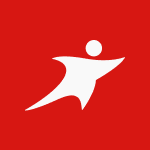Aramark Q4 2020 Earnings Report
Key Takeaways
Aramark reported a 32% decrease in revenue compared to the prior year, but generated positive cash flow and maintained strong liquidity with approximately $2.6 billion cash availability at quarter-end. Client reopenings and expanded service offerings contributed to sequential improvement in business performance across all segments compared to the third quarter.
Generated positive cash flow and maintained strong liquidity.
Revenue decreased by 32%, with organic revenue down 36%.
EPS was $(0.59), and Adjusted EPS was $(0.35).
AOI drop-through consistent with Company's expectations
Forward Guidance
Aramark expects organic revenue improvement over the course of the fiscal year. Adjusted Operating Income (AOI) is expected to reflect a drop-through rate of 20%-25% in the first half of the year. Free Cash Flow is expected to be in a range of $100 million use to $200 million generation, dependent on the pace of recovery and timing of underlying growth.
Positive Outlook
- Organic revenue improvement over the course of the fiscal year.
- Disciplined cost management.
- Ongoing restart costs associated with client reopenings balanced by disciplined cost management.
- Continued investment to support growth opportunities.
- The first quarter will include seasonal outflow associated with Higher Education followed by positive cash flow over the balance of the year.
Challenges Ahead
- Adjusted Operating Income (AOI) reflecting a drop-through rate of 20%-25% in the first half of the year.
- Ongoing restart costs associated with client reopenings.
- Continued investment to support growth opportunities.
Historical Earnings Impact
Analyze how earnings announcements historically affect stock price performance
